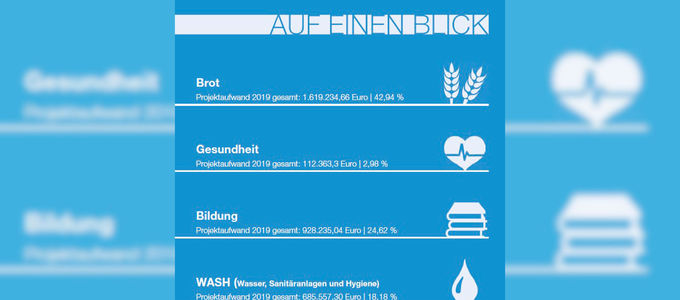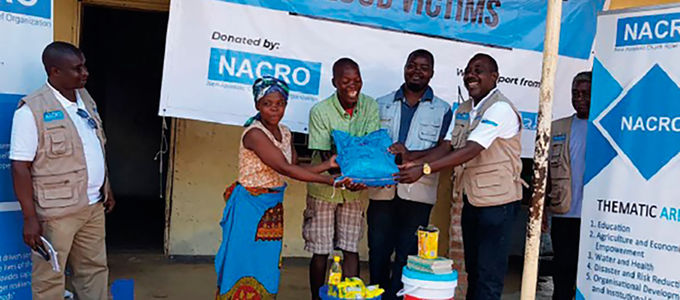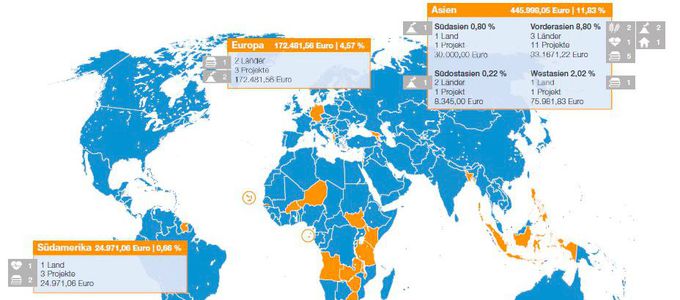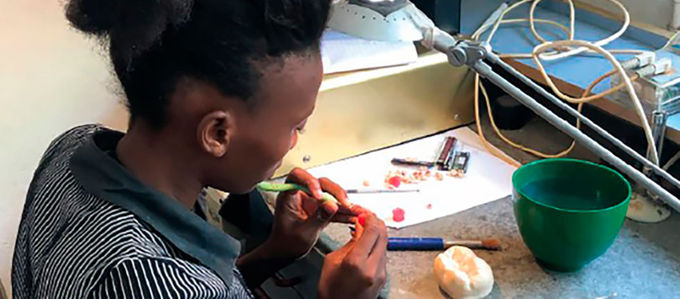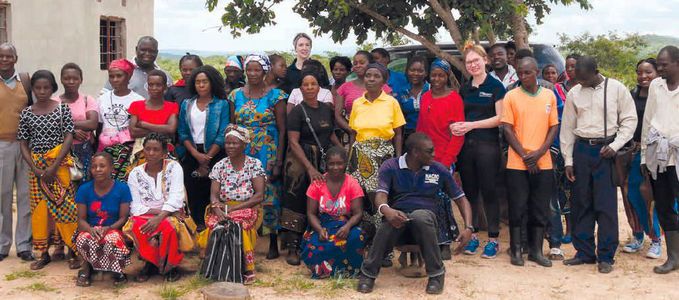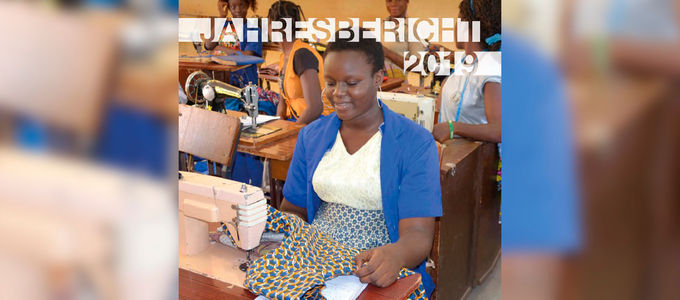
More donations, more funding for projects: this is the formula that sums up the year 2019 for the charity nak-karitativ. The recently published annual report makes it clear how necessary this was and is.
The balance sheet is impressive: more than 3.8 million euros were directly injected
into project work in the past year. It was the second highest amount in the past decade. The funds were used to finance 72 ongoing projects, nine sponsorships, and 15 long-time campaigns in 23 countries on four continents. With a share of 83 per cent, the main focus was on Africa.
What the money is used for
About 43 per cent of the funds were allocated to the bread sector, in other words, projects that secure people’s livelihoods. One project mentioned in the annual report is Savings Group in Zambia. The participants pay into a loan fund from which they can later borrow money to set up their own businesses. People who until then had lived below the poverty line were able to increase their income by 40 per cent.
About a quarter of the project funding went to Education. Nak-karitativ is spearheading the long-term funding of a vocational school for young girls in Burkina Faso. The 2019 graduates founded their own businesses or found good jobs.
Nearly a fifth of the money went toward WASH. The acronym stands for “water, sanitation, and hygiene”. This includes the building of latrines for two schools in eastern Kenya—including a biogas unit to turn the waste into energy. The generated gas is used in the school’s kitchen and reduces the consumption of firewood in the region, which is severely affected by climate change.
A tenth of the funds were needed for the disasters sector, especially in south-eastern Africa: nearly 25,000 people in Malawi and Zimbabwe received help after Hurricane Idai.
The rest went to the Health and Structure sectors. The flagship project here is the medical station on São Tomé, which provides dental and general medical care for around 3,000 patients a year.
Where the money comes from
These project funds accounted for 95 per cent of the total expenditure of almost 4.1 million euros. The remaining amount was spent on administrative costs and public relations.
Most of the money came from donations: a total of 2.8 million euros. More than two thirds of these were individual donations. Sponsorships and permanent campaigns, legacies, and a financial contribution from human aktiv, the charity of the New Apostolic Church Southern Germany, also contributed significantly.
State subsidies amounting to a good 240,000 euros were also received. NAK-karitativ had already set aside about one million the year before to pay bills due in 2019.
The pandemic exacerbates hunger
Both the chairman and the patron of the charity express concern in their forewords with respect to the year 2020. Jörg Leske writes: “A pandemic changes lives,” he says. “Much more so in the countries of the Global South, where many people work in the informal economy. They used to be called day labourers.” And that means: “On account of Covid-19 the fight against the enemy hunger has taken on new significance.”
The retired Chief Apostle Leber, who is the patron of NAK-karitativ underlines: “This will lead to new challenges. How good that many people in spite of the current situation are still allowing themselves to be touched by the hardship in other parts of the world.”






